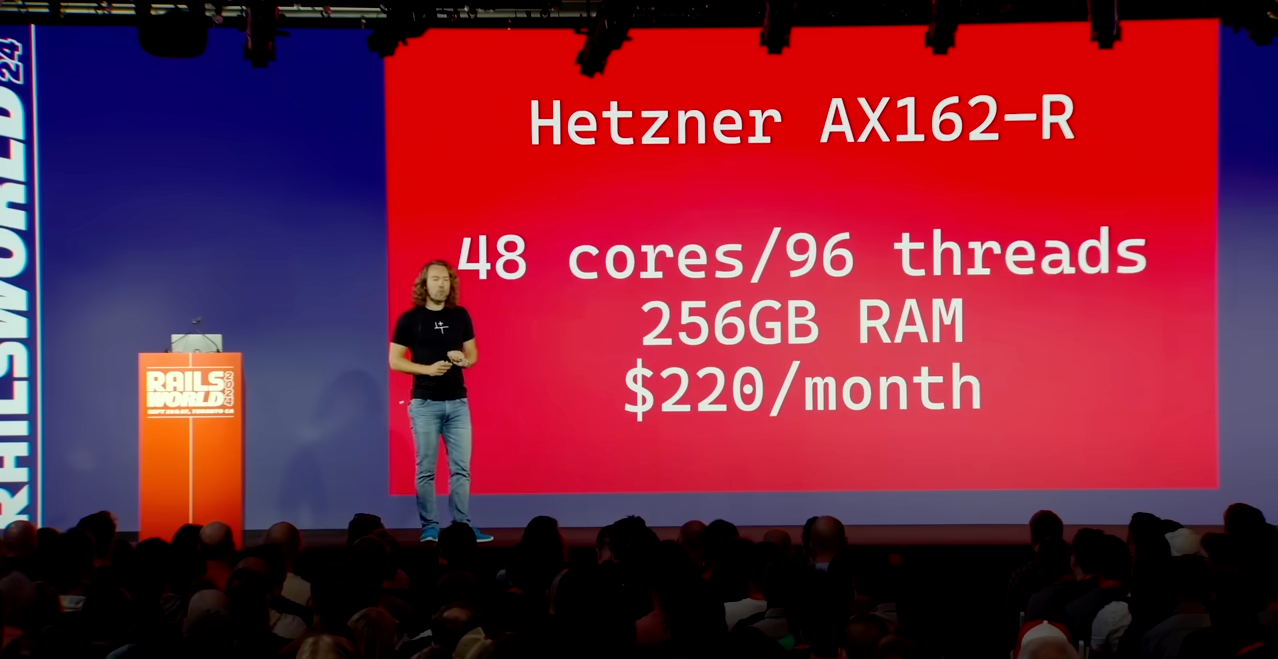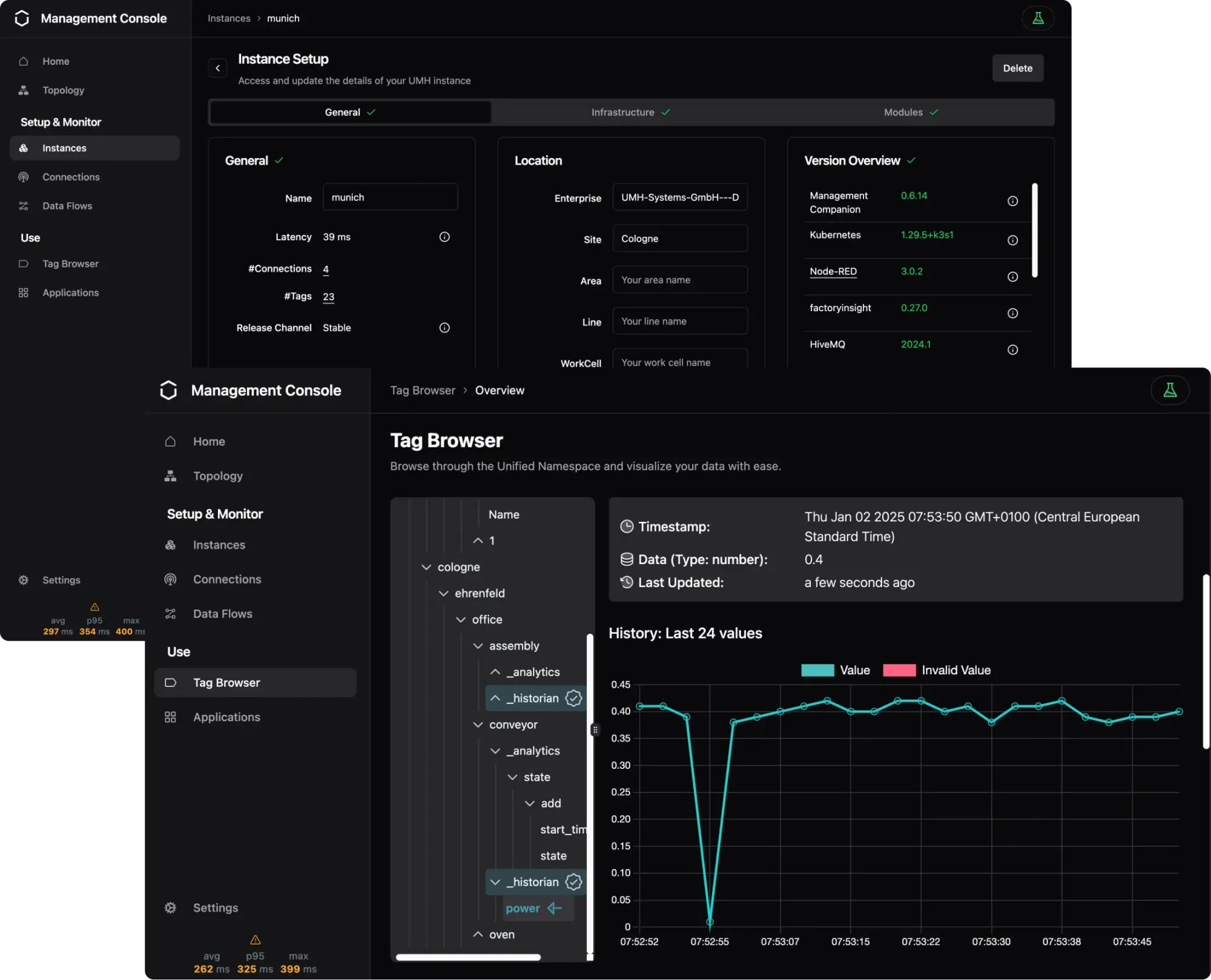No, you don’t have to use AWS or Azure. While AWS and Azure are industry leaders, their advantages often only materialize at massive scales. In many cases, they lead to escalating costs and vendor lock-in without delivering proportional benefits.
If your organization hasn’t yet committed to a cloud provider or negotiated fixed contracts, it’s worth exploring alternatives like Hetzner.
In this article, we provide a technical comparison between Hetzner, AWS, and Azure, focusing on three key aspects:
- Cost Efficiency
- Adequate Performance and Reliability
- Industry Trends
Cost Efficiency: Hetzner vs. AWS and Azure
Below is a direct comparison of equivalent instances from Hetzner, AWS, and Azure as of 2024-10-16.
Base Numbers
| Cloud Provider | Type | vCPUs | RAM | Monthly Cost |
|---|---|---|---|---|
| Hetzner Cloud | CPX41 | 8 | 16 GB | $32.70 (billed hourly) |
| AWS EC2 (1-Year) |
c6g.2xlarge | 8 | 16 GiB | $180.60 |
| AWS EC2 (On-Demand) |
c6g.2xlarge | 8 | 16 GiB | $226.59 |
| Azure VM | F8 | 8 | 16 GiB | $331.42 (billed hourly) |
Cost Comparison:
- AWS On-Demand vs. Hetzner: $226.59 / $32.70 ≈ 6.93 times more expensive
- AWS 1-Year Reserved vs. Hetzner: $180.60 / $32.70 ≈ 5.52 times more expensive
- Azure vs. Hetzner: $331.42 / $32.70 ≈ 10.14 times more expensive
This is not an isolated case. Let’s examine more powerful instances:
| Instance Type | vCPUs/CPUs | RAM | Monthly Cost |
|---|---|---|---|
| Hetzner CPX51 | 16 vCPUs | 32 GB | $71.23 |
| Hetzner AX102 (Dedicated CPU, 1-month commitment) |
16 CPUs (Dedicated) | 128 GB | $134.94 |
| AWS c6g.4xlarge (1-Year) |
16 vCPUs | 32 GiB | $361.28 |
| AWS c6g.4xlarge (On-Demand) |
16 vCPUs | 32 GiB | $457.72 |
| AWS r6g.4xlarge | 16 vCPUs | 128 GiB | $453.18 |
Not all CPUs are created equal, and performance can vary significantly between different architectures and configurations. AWS’s c6g instances use ARM-based Graviton2 processors, which offer excellent performance per dollar for certain workloads but may present compatibility issues with software not optimized for ARM architecture. When selecting an x86-based instance like AWS’s m7a.2xlarge (8 vCPUs, 32 GB RAM), which utilizes AMD EPYC processors, the cost increases to $405.47 per month—making it over 5 times more expensive than Hetzner’s CPX51.
Hidden Costs in AWS and Azure
Beyond the base pricing, AWS and Azure often introduce additional expenses that can impact the total cost of ownership:
- Storage Costs: EBS volumes (AWS) and Managed Disks (Azure) are billed separately.
- Data Transfer Fees: Charges apply for data movement between services and outbound internet traffic, which can accumulate based on usage patterns.
- Complex Pricing Models: Layered pricing structures and a multitude of service offerings can make cost estimation and budgeting more challenging.
In contrast, Hetzner offers straightforward, nearly all-inclusive pricing, simplifying budget management and reducing the risk of unexpected charges. Yes, there are disadvantages about managing your own infrastructure, and we will cover them in the following chapters.
Adequate Performance and Reliability
For many manufacturing companies and system integrators, the primary requirement is reliable application hosting without the need for massive scaling or global distribution. Most workloads in the manufacturing sector continue to operate on virtual machines, often running on-premises Windows servers. In such contexts, the advanced features and managed services offered by AWS and Azure may be excessive and unnecessarily complex.
Many organizations have small IT teams—sometimes as few as one person—responsible for managing Industrial IoT applications and infrastructure. These teams need straightforward, cost-effective solutions that align with their existing skill sets. Starting with a couple of VMs on Hetzner allows companies to begin their journey into modern IT infrastructure without incurring high costs or requiring specialized personnel.
In contrast, adopting AWS or Azure from the outset can require a steep learning curve and may necessitate hiring additional staff with specialized expertise. We experienced this firsthand: we spent several weeks trying to perform simple administrative tasks on AWS, such as adding a billing administrator, and found the process unnecessarily complicated.
Do you really need the advanced features of AWS and Azure right now? Or would a simple virtual machine at a reasonable price be sufficient? That’s the main question here.
As the creator of Ruby on Rails puts it:
I’d rather make some nice software than pay 100 times more for my compute.
Let's look into what the industry is saying!
Industry Trends
There’s a growing movement among tech companies and startups to opt for more cost-effective hosting solutions like Hetzner. The high costs associated with AWS and Azure are leading many to reconsider their choices.
Ahrefs

Ahrefs, a prominent SEO tool provider, detailed their experience in the article “How Ahrefs Saved US$400M in 3 Years by NOT Going to the Cloud”. Their main points are:
Vendor Lock-In Concerns: They emphasized the difficulty of exiting a cloud provider due to convenience and potential vendor lock-in.
“It is complicated to leave a cloud once you are there… Also, abandoning a cloud infrastructure due to higher costs may not be what the engineering team wants.”
Performance Advantages: Owning their hardware allowed for faster and more comprehensive results, enhancing their product.
“Having faster and better results means that our servers are much faster than what a cloud can provide… Our reports are also generated faster and are more comprehensive.”
Revenue Implications: Their total revenue over that period was around $257 million, meaning AWS costs would have exceeded their entire revenue.
The company revenue wouldn’t even be close to covering the 2½-year AWS usage costs.”
Massive Cost Savings: Ahrefs calculated that using AWS would have cost them an additional ~$400 million over 2.5 years compared to their own infrastructure.
“Ahrefs has saved ~USD 400 million by ensuring its infrastructure is NOT 100% in the IaaS cloud during the last 2½ years.”
Insights from Industry Leaders

David Heinemeier Hansson, the creator of Ruby on Rails, discussed at the Rails World Conference how startups can save costs and gain more powerful machines by choosing providers like Hetzner over AWS or Azure. Key points from his keynote include:
Critique of Cloud Dependency: He criticized the industry trend of making developers feel incapable of managing servers, leading to over-reliance on expensive cloud services.
We’ve sort of all turned into pink elephants tied with a tiny rope of learned helplessness when it comes to deployment… The problem is that the entire industry has cultivated a fear of touching a server.”
Value of Self-Hosting: He pointed out that you can get substantially more computing power for less money by managing your own servers.
You can buy… 40 cores, 96 threads, 256 GB of RAM for $220 a month [from Hetzner]… I’d rather make some nice software than pay 100 times more for my compute.”
Questioning Cloud Economics: He highlighted the significant markup on cloud services compared to the actual cost of hardware.
“AWS has a 40% margin… Dell, someone who actually makes the computers, have a 5% margin. That is a failed market.”
These perspectives reflect a larger industry movement: companies are reevaluating the cost-benefit equation of major cloud providers, especially when high expenses don’t translate into proportional advantages.
Quote: "For 2024, we've brought the cloud bill down from the original $3.2 million/year run rate to $1.3 million."
Read More: https://world.hey.com/dhh/our-cloud-exit-savings-will-now-top-ten-million-over-five-years-c7d9b5bd
Conclusion: What has this to do with UMH?
To get started with the UMH, you need to install it via the Management Console, either locally using the experimental Docker container or in a virtual machine.
If you don’t have an on-premises VM, you don’t need to use AWS or Azure either! By choosing Hetzner, you can deploy a UMH cloud instance for approximately $32 per month, compared to several hundred dollars on AWS or Azure. This makes it a much easier sell to conservative manufacturing companies, as the initial proof of concept (PoC) with the free community edition of UMH and a Hetzner cloud instance costs just a $32 per month of software and infrastructure costs.
In conclusion, if you’re just getting started and are not yet locked into AWS or Azure, Hetzner offers a cost-effective, reliable, and straightforward alternative. It allows you to deploy applications like UMH without incurring excessive costs or dealing with unnecessary complexity.

IT / OT Integration Platform for Industrial DataOps
Connect all your machines and systems with our Open-Source IT/OT Integration Platform to make all shop-floor data accessible at a single point.




